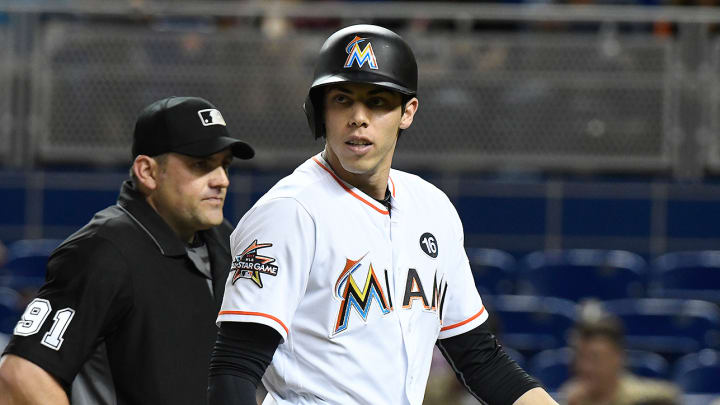29. Miami Marlins (15–28, minus-44, LT: 22)

The death of Jose Fernandez and a lack of organizational depth made it a near certainty that the rotation would struggle; Miami starting pitchers unsurprisingly rank a woeful 13th in the National League in both park-adjusted ERA and park-adjusted fielding-independent pitching.
The much bigger puzzler, though, has been Christian Yelich’s disappearing bat. The lefty-swinging outfielder enjoyed a breakout season in 2016, smashing 21 homers—the first time he’d ever even cracked double digits. Now in his age-25 season, a time when Yelich should be peaking, he’s having the worst season of his five-year major league career.
More than one-quarter of the way through the year, Yelich is on pace for career lows in batting average, on-base percentage, and slugging. One of the biggest knocks against his approach (even when he’s hit) has been his huge groundball tendencies. At a time when a swing-for-the-fences mindset has made sudden hitting stars out of players like J.D. Martinez, Logan Morrison, and even Yonder Alonso, Yelich has pounded more than 60% of his career balls in play into the ground, the second-highest groundball rate of any hitter since the start of 2013. The difference this year is that Yelich suddenly isn’t hitting line drives: He smacked them 22.5% of the time from 2013-2016, but just over 14% of the time this year, placing him in the bottom 10 among all NL hitters.
While many stats can take half a season or stabilize, line-drive rate tends to crystallize earlier in the season. A four-year career stuffed with line drives still leads us to believe these 42 games are likely a fluke, and that he’ll improve soon. But with Yelich’s power upside already restricted by his worm-burning ways, an accompanying lack of liners would make him one of the league’s biggest disappointments in 2017.
